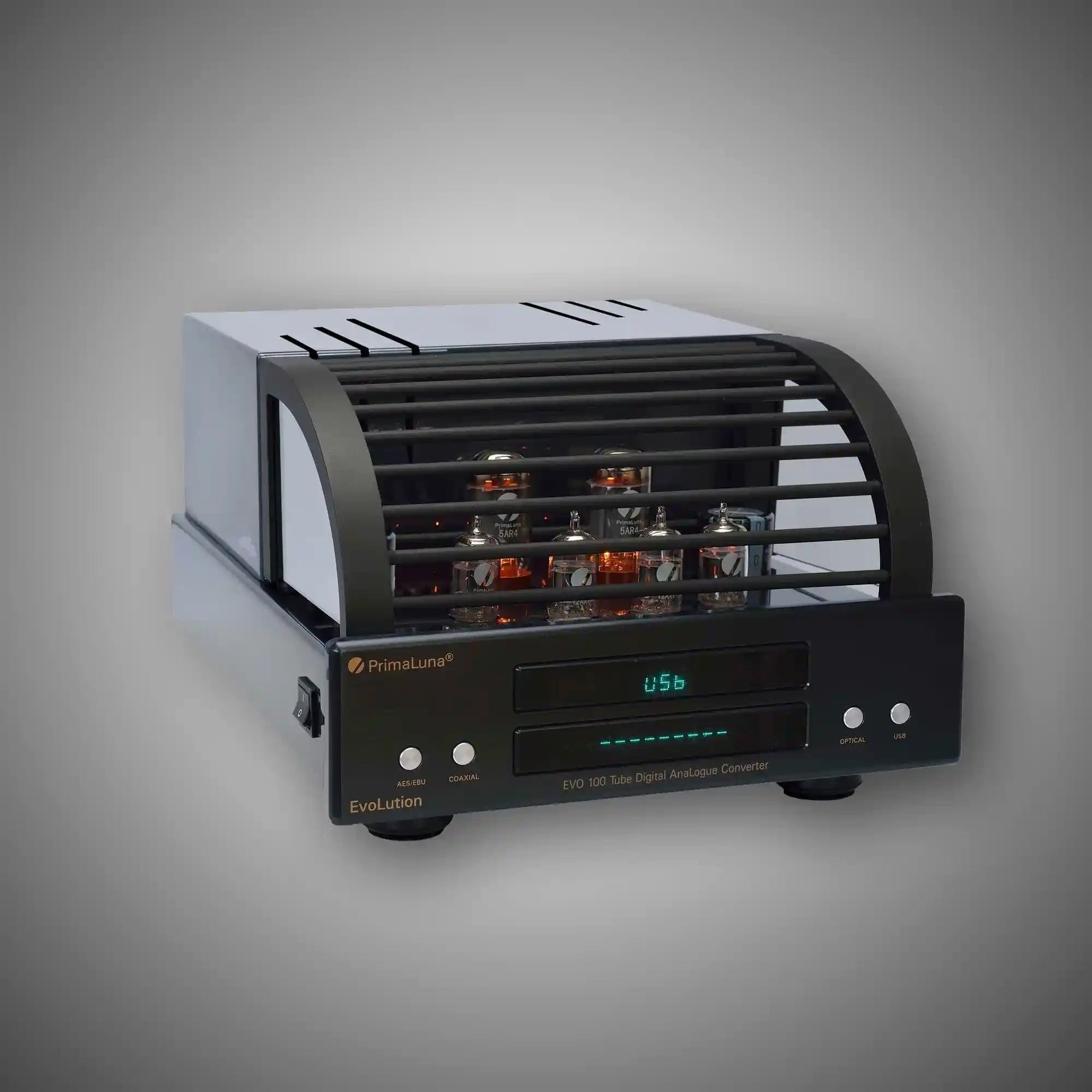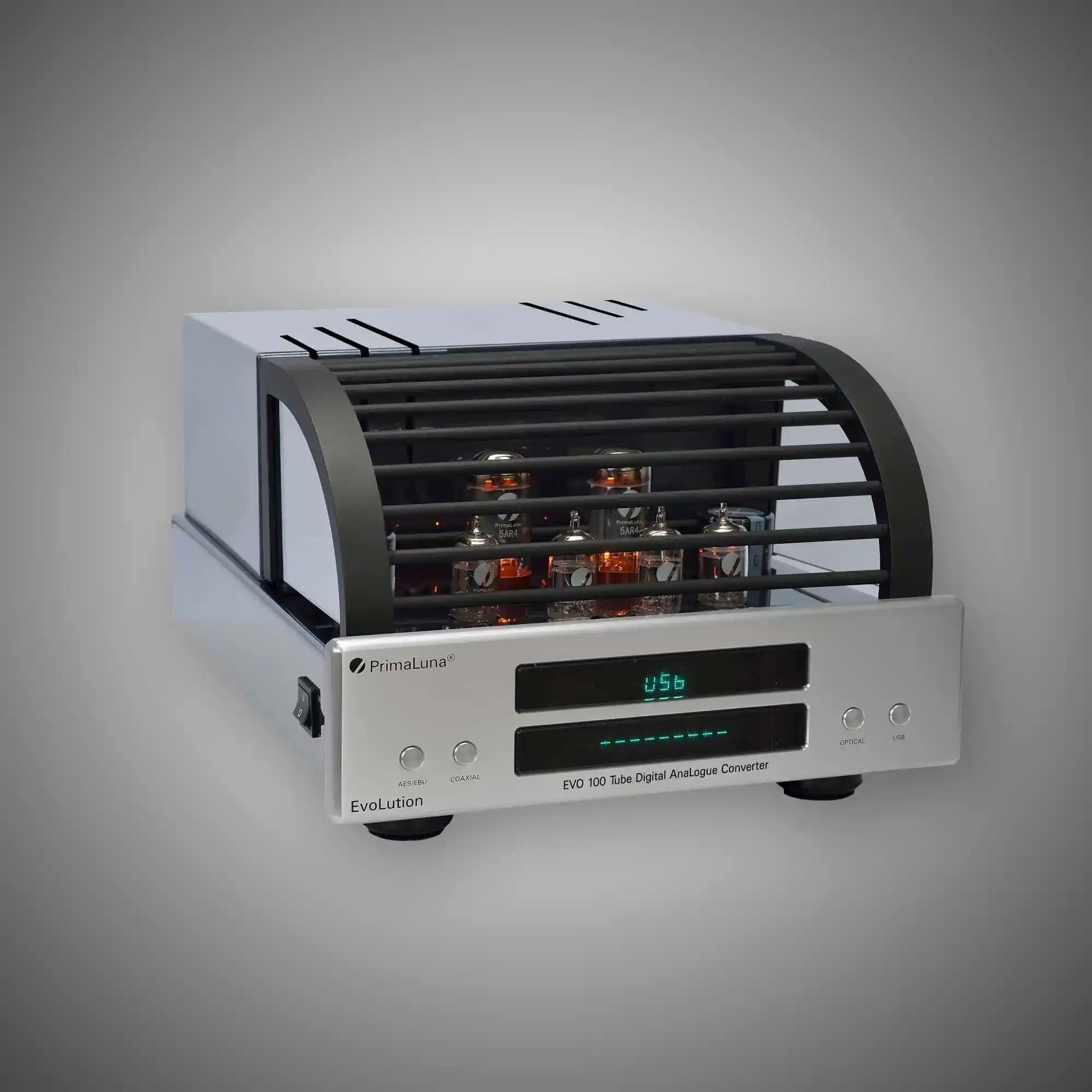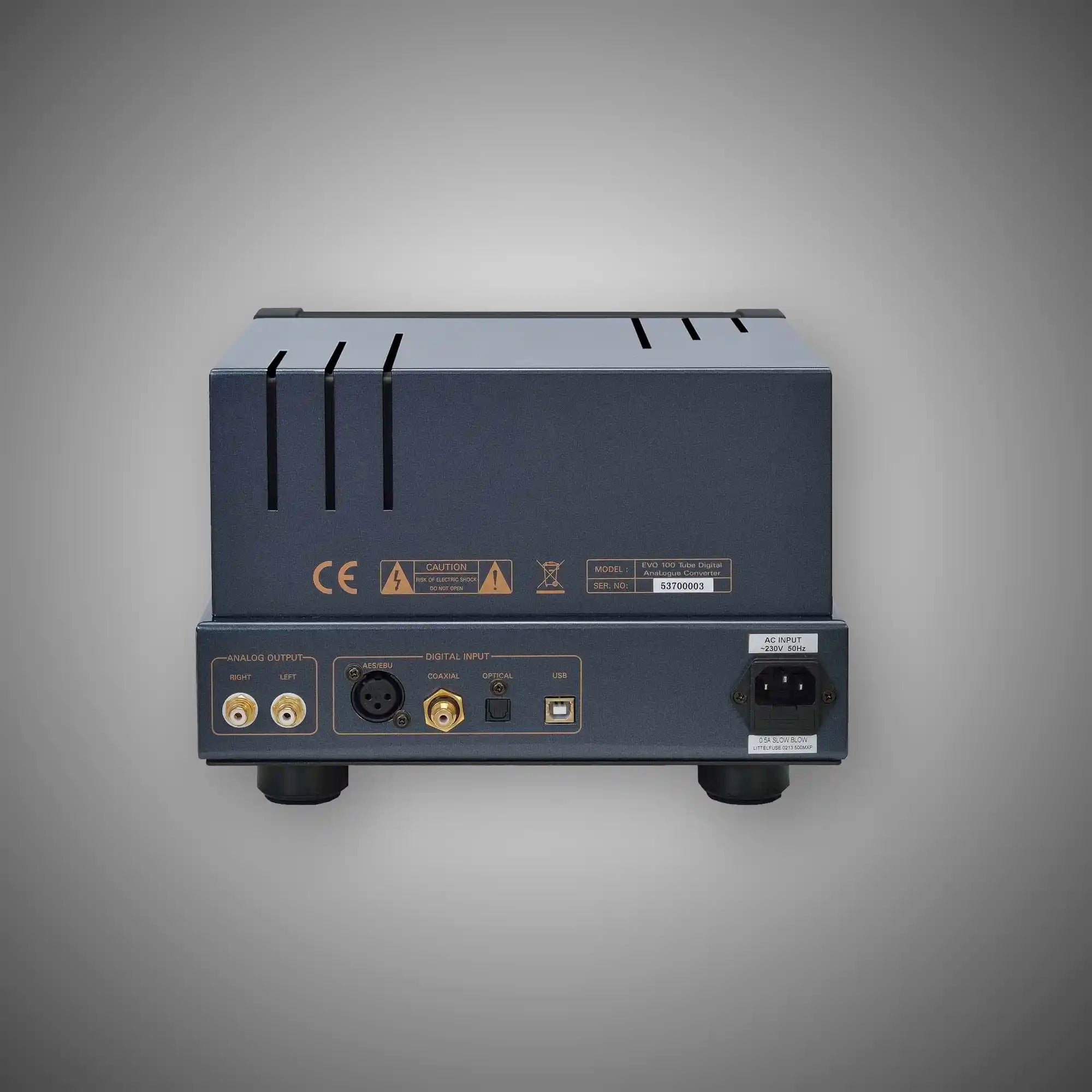


PRIMALUNA EVO 100 Tube DAC
Introducing the world's first tube-based data clocking device: the SuperTubeClock™
By incorporating a low-noise mini-triode vacuum tube into the digital clock, this boldly conceived design provides vastly superior resolution, detail retrieval, improved clarity, increased definition and detail from top to bottom.
PRIMALUNA EVO 100 Tube DAC
AC OFFSET KILLER
AC Offset Killer is about goose bumps. The ones you get when music comes out of a background so quiet, you may say to yourself “Just how is this possible?” PrimaLuna custom-winds our own massive toroidal power transformers that are low in hum and EMI. But we wanted more. Our engineers designed the AC Offset Killer to lower transformer noise to a place no other manufacturer dreams of going, regardless of how bad your electricity is. The result? Sense of space. Texture. The resonance of an acoustic guitar or violin string that seems to trail on forever. The AC Offset Killer will amaze you.
PREMIUM PARTS
Premium parts including polypropylene coupling caps, triple pi power supply filters, custom designed isolation transformers which separate the analog and digital devices, resulting in decreased signal degradation and improved sonics from top to bottom. Many DACs weigh in at ten pounds or less. The EVO 100 Tube DAC weighs nearly 29 pounds!
POINT TO POINT WIRING
You spend a lot of money on interconnects. So why have the signal go right from the RCA jacks or speaker terminals into circuit boards with copper traces so thin you can hardly see them? What’s high-end about that?
PrimaLuna employs Point to Point Wiring on all products. The entire signal path, including resistors and capacitors, is painstakingly hand wired with heavy-gauge cable by craftsman.
DUAL MONO TOPOLOGY
Per channel dedicated tubes. While it is fine to use a single tube as a buffer for both channels and claim your DAC is "tube", it can't be compared to the PrimaLuna design and what it does for the music.
USB DIGITAL INPUT
USB digital input allows using your computer for storage and playback of your music with all the benefits of features like playlists and easier access to your whole music library. Rather than just add in an USB input as an afterthought, PrimaLuna engineers searched endlessly looking for the best-sounding USB interface we could find. Our USB input converts the jitter-filled USB digital signal to S/PDIF, dramatically improving the digital signal quality before it gets to the SuperTubeClock. This USB input is a true high-resolution digital input.
| Inputs: | USBAES/EBUCoaxOptical |
| Outputs: | Stereo RCA |
| PCM (all inputs): | 16bit-24bit44.1kHz - 192kHz |
| DSD (USB): | DSD64-DSD128 (DoP) |
| DSD (other inputs): | DSD64 (DoP) |
| DAC: | TI (Burr Brown) PCM1792A |
| 24bit/192kHz Upsampling: | TI (Burr Brown) SRC4192 |
| Tube Complement: | 2 - 12AX72 - 12AU72 - 5AR4 |
| Dimensions: | 28cm x 19cm x 40.3cm |
| Weight: | 13kg |
Pairs well with
If you have any questions, you are always welcome to contact us. We'll get back to you as soon as possible, within 24 hours on weekdays.
-
Shipping Information
Use this text to answer questions in as much detail as possible for your customers.
-
Customer Support
Use this text to answer questions in as much detail as possible for your customers.
-
FAQ’s
Use this text to answer questions in as much detail as possible for your customers.
-
Contact Us
Use this text to answer questions in as much detail as possible for your customers.

